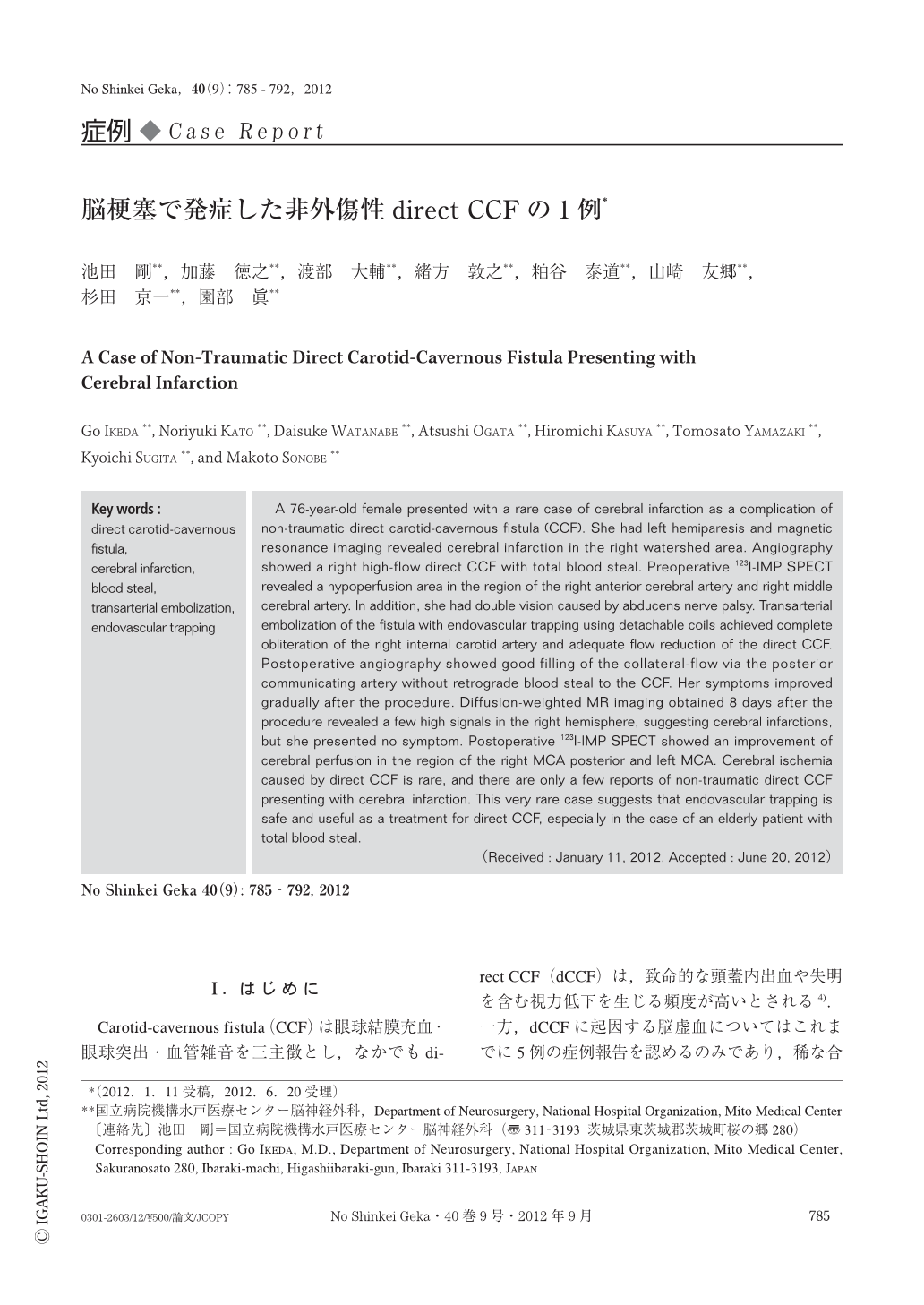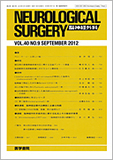Japanese
English
- 有料閲覧
- Abstract 文献概要
- 1ページ目 Look Inside
- 参考文献 Reference
Ⅰ.はじめに
Carotid-cavernous fistula(CCF)は眼球結膜充血・眼球突出・血管雑音を三主徴とし,なかでもdirect CCF(dCCF)は,致命的な頭蓋内出血や失明を含む視力低下を生じる頻度が高いとされる4).一方,dCCFに起因する脳虚血についてはこれまでに5例の症例報告を認めるのみであり,稀な合併症と言える4-7,11).これらの報告は外傷性のものばかりで,非外傷性の報告例は見当たらない.今回われわれは,典型的な三主徴を認めずに脳梗塞で発症した非外傷性dCCFの1例を経験したので,文献的考察を加え報告する.
A 76-year-old female presented with a rare case of cerebral infarction as a complication of non-traumatic direct carotid-cavernous fistula (CCF). She had left hemiparesis and magnetic resonance imaging revealed cerebral infarction in the right watershed area. Angiography showed a right high-flow direct CCF with total blood steal. Preoperative 123I-IMP SPECT revealed a hypoperfusion area in the region of the right anterior cerebral artery and right middle cerebral artery. In addition, she had double vision caused by abducens nerve palsy. Transarterial embolization of the fistula with endovascular trapping using detachable coils achieved complete obliteration of the right internal carotid artery and adequate flow reduction of the direct CCF. Postoperative angiography showed good filling of the collateral-flow via the posterior communicating artery without retrograde blood steal to the CCF. Her symptoms improved gradually after the procedure. Diffusion-weighted MR imaging obtained 8 days after the procedure revealed a few high signals in the right hemisphere, suggesting cerebral infarctions, but she presented no symptom. Postoperative 123I-IMP SPECT showed an improvement of cerebral perfusion in the region of the right MCA posterior and left MCA. Cerebral ischemia caused by direct CCF is rare, and there are only a few reports of non-traumatic direct CCF presenting with cerebral infarction. This very rare case suggests that endovascular trapping is safe and useful as a treatment for direct CCF, especially in the case of an elderly patient with total blood steal.

Copyright © 2012, Igaku-Shoin Ltd. All rights reserved.


